John Lodge Cowley’s An Appendix to Euclid’s Elements is a fascinating book. It’s incredibly visually attractive, with pages of beautifully executed copperplate etchings that fold up into interactive geometrical diagrams. It’s even remarkably compelling for a math textbook. More than that, though, this book is part of a larger story of the transmission of knowledge throughout history and Enlightenment re-engagement with Classical scholarship.
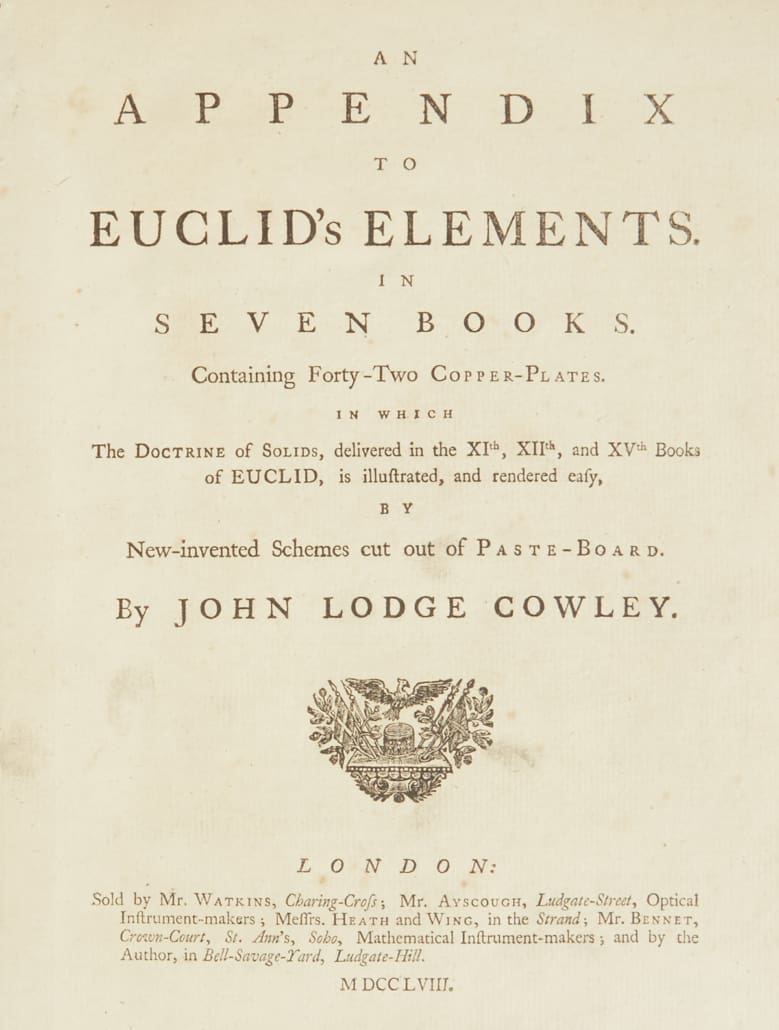
John Lodge Cowley (1719-1797), An Appendix to Euclid’s Elements, London: Watkins, Ayscough, Heath and Wing, Bennet, and the Author, 1763. Sold for $1,500 in Fine and Decorative Art, May 20th, 2020, 12 PM CST.
Our story begins around 300 BCE, with the publication of Euclid’s Elements. Almost nothing is known about Euclid’s life except that he taught in Alexandria during the reign of Ptolemy I Soter (r. 323-285 BCE). Alexandria was an important center of learning in the Greco-Roman world, and it is from within this scholarly milieu that Euclid compiled and composed his Elements, which contained all of the mathematical knowledge available at the time. Euclid built on the work of previous mathematicians, carefully appraising their work to compile the most concise and accurate information available. Along with building on the work of previous scholars, Euclid provided a new structure and model to understand their work.
The book was a hit. It circulated widely throughout the Classical world, and was seen as the definitive work on geometry and mathematics for centuries. The Elements was introduced to the Islamic world by the Byzantines, and while it was largely forgotten in Europe following the fall of Rome, it became vastly influential on Arabic mathematics and science. Many Arabic editions of the Elements circulated through the Islamic world from the 9th century CE onward, by notable scholars including al-Ḥajjāj ibn Yūsuf ibn Maṭar (786–833) at the court of Harun al-Rashid of Arabian Nights fame.
Eventually, the Elements found its way back to Europe in the hands of Moors moving north into Iberia. Al-Andalus, as Moorish Spain was called, soon became a flourishing center of learning and culture, with Europe’s first academy of medicine, stunning art and architecture, and, briefly, unprecedented religious toleration. It was from this environment that the Elements returned to the attention of Christian European scholars, in the hands of an enterprising English philosopher. Adelard of Bath (ca. 1080–ca.1152), a brilliant philosopher, linguist, and stubborn round-earther, had traveled throughout much of Europe and the Islamic world in his studies. In Al-Andalus, where, according to legend, he traveled disguised as a Muslim student, Adelard obtained an Arabic edition of Euclid’s Elements, most likely al-Ḥajjāj ibn Yūsuf ibn Maṭar’s aforementioned translation. Upon his return to England, he published a Latin translation and commentary of the Elements. This translation, for many years the earliest known Latin translation of the Elements, was widely sold and played a major role in re-solidifying the Elements’ place as the mathematics textbook.

The great mosque in Córdoba is a characteristic example of the flourishing of art, architecture, and scholarship in Al-Andalus. Wikimedia Commons
During the Renaissance, Euclid continued to be seen as the primary source of mathematical knowledge. A renewed interest in the Classical past led to earlier Greek copies of the Elements being unearthed, and new editions and commentaries continued to be published throughout the period, underscoring and propagating Euclid’s ideas. With the Enlightenment came an increased interest in mathematics and science, and many groundbreaking discoveries were made, including non-Euclidean geometry. Despite the fact that it was now clear that Euclid’s Elements did not contain all the mathematical knowledge there was to be had, it continued to be seen as the foundational body of knowledge that new discoveries built upon. However, as the Enlightenment continued, the Elements became less valued as a textbook. As more people became educated and ideas about education changed, there began to be a demand for a distillation of these ideas into more accessible textbooks for students.
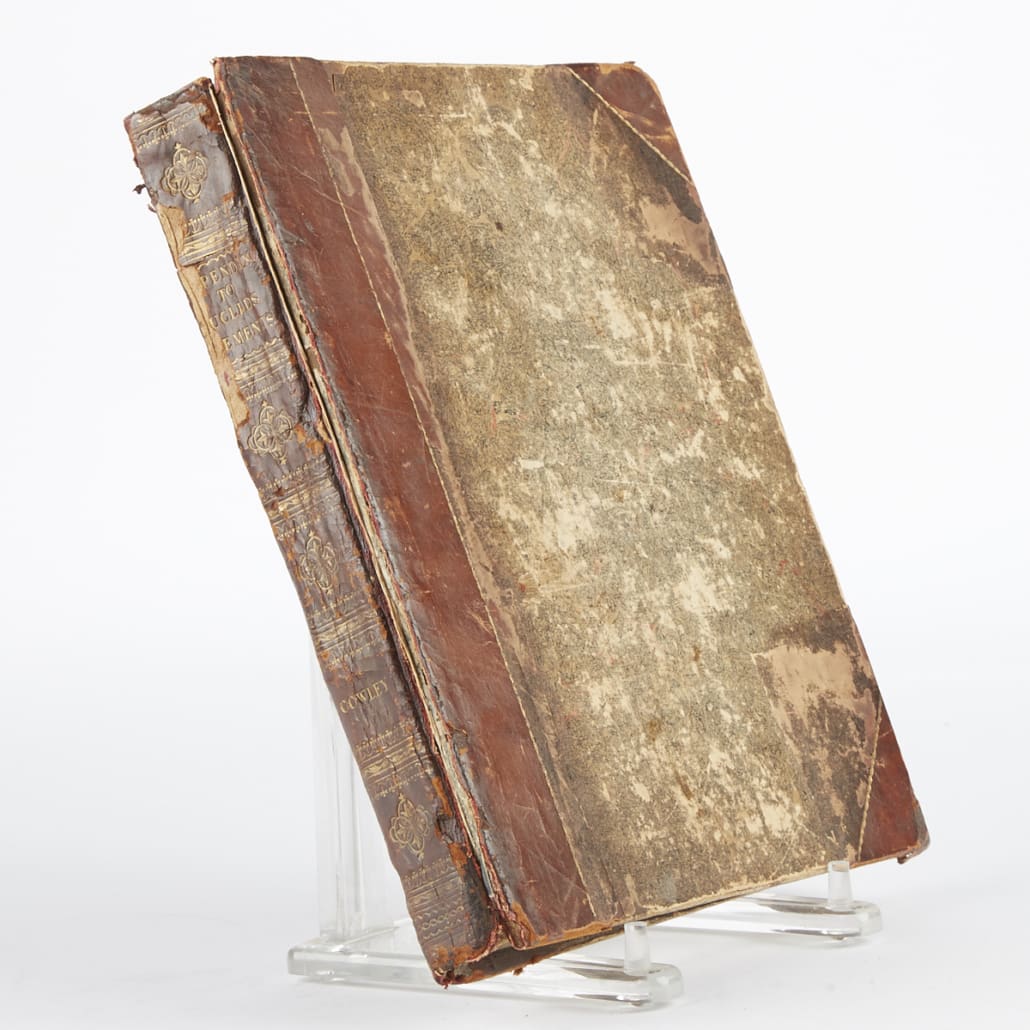
John Lodge Cowley, An Appendix to Euclid’s Elements.
Enter John Lodge Cowley (1719-1797). Cowley, an English mathematician and geographer, served throughout his career as a geometry teacher at William Hogarth’s St. Martin’s Lane Academy, mathematics professor at the Royal Military Academy in London, and Cartographer Royal for King George II. He was well-known for his mathematical achievements, and in 1768 he was elected a Fellow of the Royal Society. Along with teaching, Cowley published a number of books on geography as well as on solid geometry. These geometry books were intended for students early in their studies, making an effort to present the information in a way that was clear and simple. One of the ways Cowley did this was by including fold-out diagrams in these books, which allowed students to gain a better understanding of concepts through visual and tactile representations.
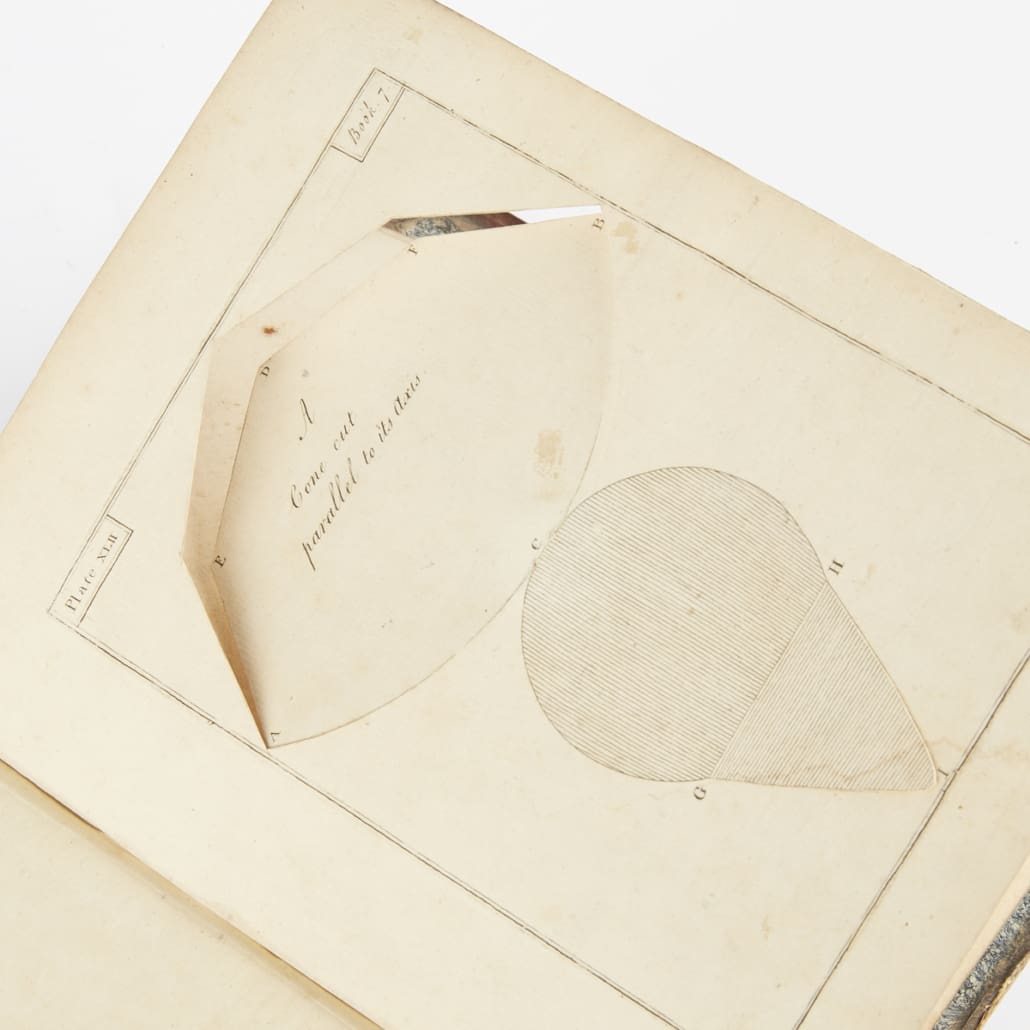
Close up of Plate XLII in An Appendix to Euclid’s Elements, showing the innovative fold-up design.
These books, and An Appendix to Euclid’s Elements in particular, exemplify a shift in approaches to teaching mathematics. Along with education becoming more widespread during this period, new methods of education were theorized by Enlightenment philosophers. These new methods emphasized learning through experimentation and observation instead of the memorization-centered approach that had been widespread in previous generations. The way Euclid’s ideas are presented in An Appendix to Euclid’s Elements is an excellent example of this new method in action: instead of simply reading the ideas, students using this book were able to actually physically observe them through the fold-up diagrams, growing to understand them through experience.
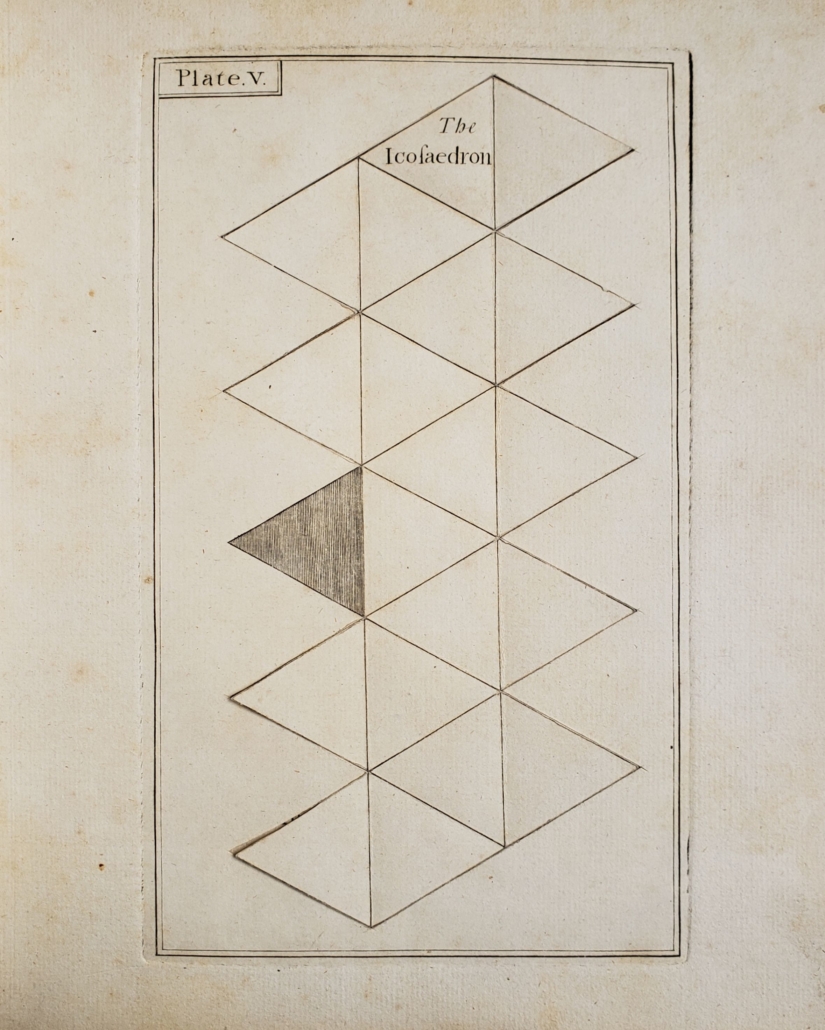
Plate V, The Icosahedron, from John Lodge Cowley’s An Appendix to Euclid’s Elements.
This book was intended to accompany Euclid’s Elements, making it accessible to modern readers and more suited for new ideas about education through its innovative interactive plates–what the book calls “new-invented schemes cut out of paste-board.” Clearly, although no longer the sole authority, Euclid was still highly valued as part of a mathematical education. However, as An Appendix to Euclid’s Elements shows clearly, his ideas were being re-explained and approached differently as mathematical knowledge expanded and theories about learning changed.
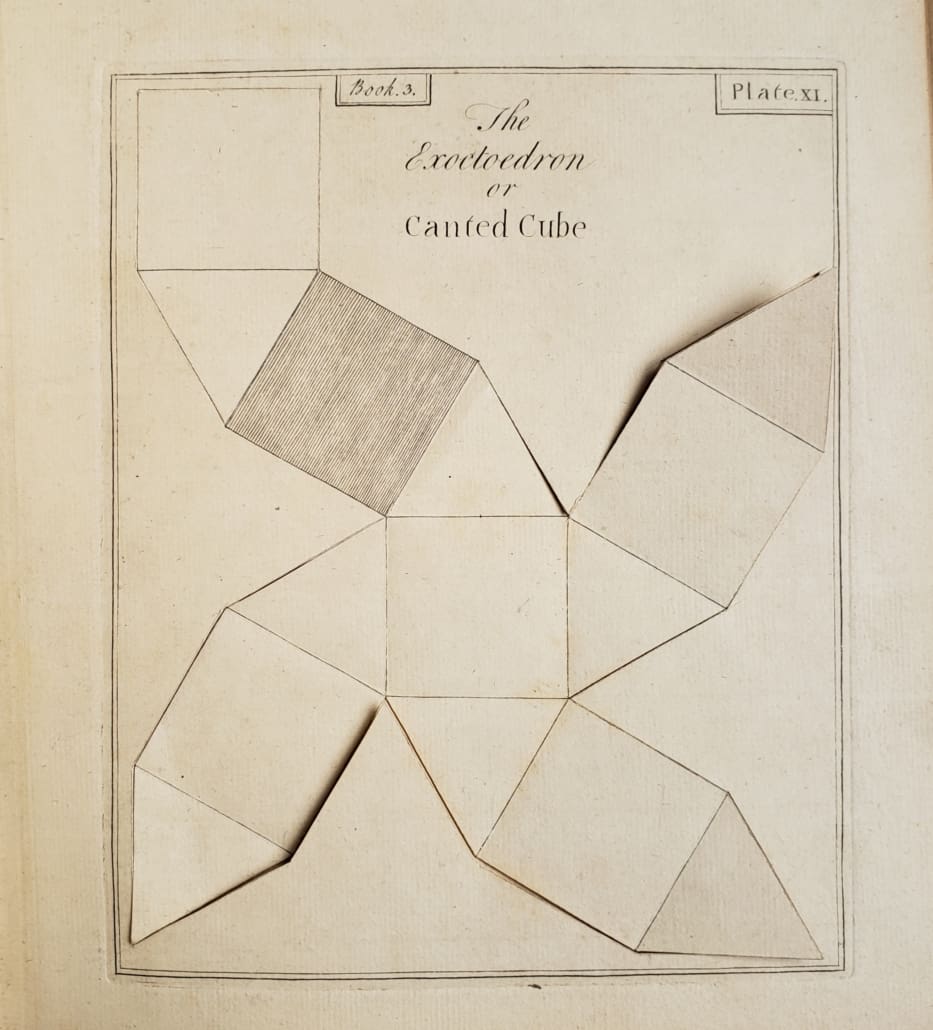
Plate XI, The Exoctoedron, from John Lodge Cowley’s An Appendix to Euclid’s Elements.
An Appendix to Euclid’s Elements was a major stepping stone in the re-distilling and understanding of Euclid to the way that it is now taught–as a major base of modern mathematics but no longer the standalone mathematics textbook. It represents a culmination of many years of knowledge being lost, transmuted, refound, and reconsidered; of shifting ideologies about mathematics and about education; and, above all, of the ideas that stayed relevant through it all.
If you have a rare book you are interested in selling or having appraised, please contact Revere Auctions.